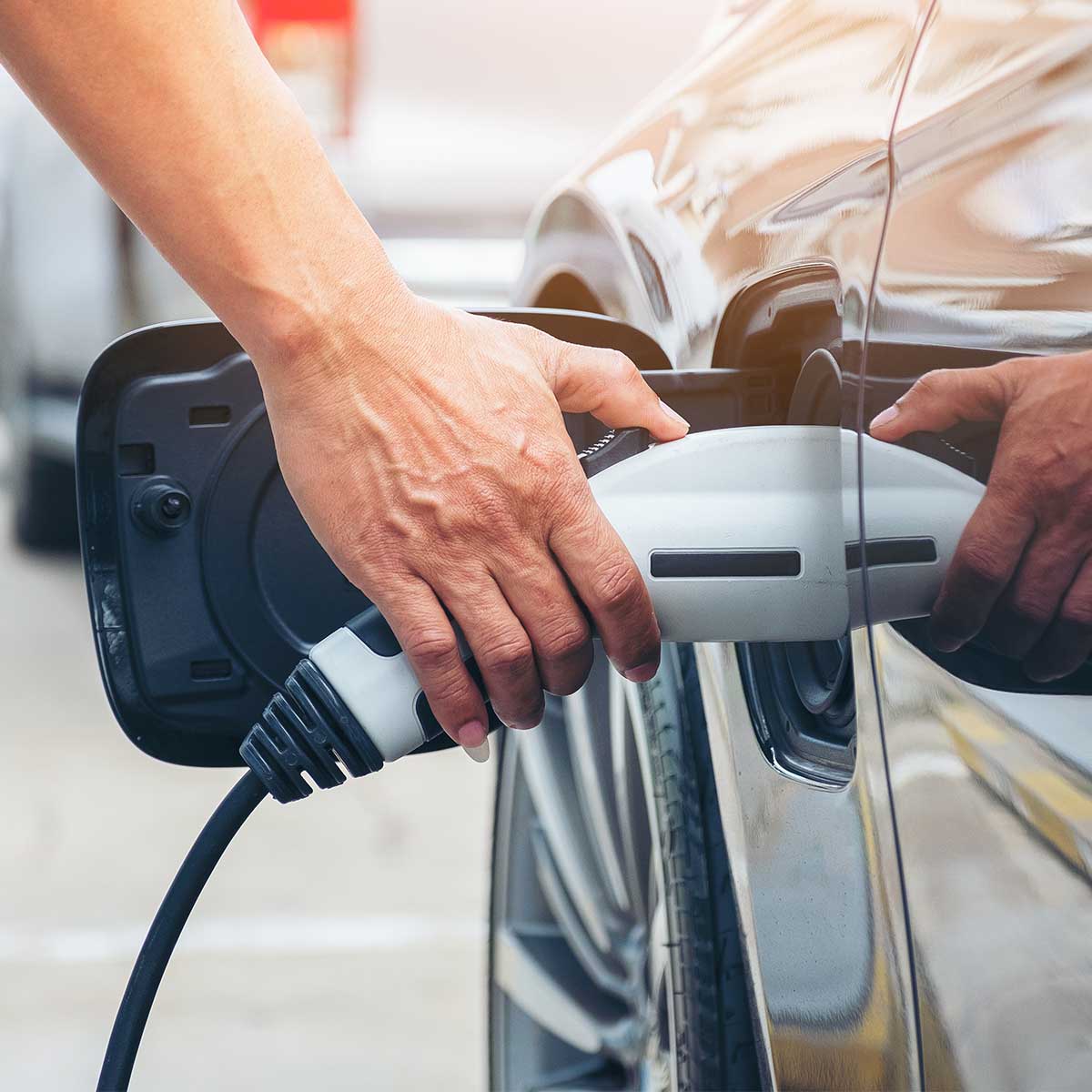Electric Vehicle charging – how real are the risks?
Risks include fires that are larger and harder to extinguish than those involving traditional vehicles, electric shocks strong enough to cause bodily injury, and trip hazards from charging cables.

In January 2024, the Society of Motor Manufacturers and Traders (SMMT) reported1 that the one millionth electric vehicle (EV) had been registered in the UK.
Risks include fires that are larger and harder to extinguish than those involving traditional vehicles, electric shocks strong enough to cause bodily injury, and trip hazards from charging cables.
With just over 23% of all new cars registered in January either full battery or plug-in hybrid electric vehicles, you may be considering providing EV charging facilities at your premises. Here, we look at some of the key risks and the controls you may need to have in place.
Options for charging EVs range from slow charging using a standard domestic socket to rapid charging using standalone charge points with a dedicated electricity supply. Whether you use the charging facilities to charge your own fleet, allow your team to charge their personal vehicles or provide a facility for public use, it’s essential you’re able to identify and manage the risk.
Understanding EV Risks
First and foremost, it’s essential to understand the risks. While fires involving electrical vehicles are rare, they do occur. They can start from the EV itself, the charging equipment or elsewhere, and can be caused by sparks or equipment overheating. The fires tend to be much more intense and take a long time to extinguish, during which time they can easily spread.
Electric shocks, even at low voltage, can cause burns, muscle spasms and broken bones, and can also stop breathing or prevent the heart from beating properly. If cables are routed across a pedestrian area, they can cause a trip hazard or be damaged either deliberately or accidentally.
Managing EV Risks
There are several steps you can take to manage the risk. Whatever your circumstances, it’s important your charging facilities are installed and maintained by competent persons.
Electricity at Work regulations2 require that electrical systems are constructed and maintained so as to prevent danger. This means you should ensure regular servicing and maintenance takes place and, in line with other electrical systems, your EV facilities should be regularly inspected by a competent electrician.
Key considerations
- Ensure your charging facility has a manual or automatic isolation switch, enabling the power supply to be safely cut off in an emergency
- Increase the distance between parked vehicles to minimise risk of fire-spread
- Position charge points to minimise the risk of collision and provide suitable crash protection, such as barriers, bollards, and raised kerbs
- Position charge points so charging can take place using the minimum length of cable and ensure cables do not lay across circulations routes
- Install security systems, such as CCTV monitoring, to deter deliberate damage
- If the charging cable is tethered to the charge point, making it easy to put the cable back in its proper resting place when charging is complete
- Ensure charge points can be easily accessed by the emergency services without blocking exits
- Never using extension leads when using a domestic socket arrangement and standard 3-pin plug for charging
- Ensure charging bays are clearly identified, with suitable instructions, indicating which vehicles they are suitable for
- Ensure flammable or combustible materials are kept away from charging bays
- Make sure your team knows what to do (and what not to do) in an emergency, (e.g. treat all exposed cables as if they were energised at high voltage and do not spray water on cables or other electrical equipment).
Additional controls
If your charging points are provided in an enclosed area, such as a workshop, underground car park or the lower levels of a multi storey car park, you may require additional controls, such as:
- Fire rated separation between charging bays
- Automatic fire detection and alarm systems
- Automatic water suppression systems such as sprinklers or manual fire-fighting resources such as electric vehicle fire blankets
- An enhanced smoke ventilation system.
Further information:
Fire Protection Association / RISCAuthority: https://www.thefpa.co.uk/advice-and-guidance/free-documents?q=rc59
Covered car parks: https://www.gov.uk/government/publications/covered-car-parks-fire-safety-guidance-for-electric-vehicles
Official building regulations guidance: different guidance applies depending on where your premises are located (refer to the planning guidance for your region)
Talk to PIB
All employers have a legal obligation to put arrangements in place to control risks to the health and safety of their employees and others affected by their undertakings. A key part of this is risk assessment, including a fire risk assessment for your premises, which PIB Risk Management can advise on.
To find out more about risk management and discuss your insurance cover in relation to EV charging facilities, please call PIB on 0330 058 9863 or email your enquiry using the button below.
Sources:
1. SMMT: https://www.smmt.co.uk/2024/02/uk-reaches-million-ev-milestone-as-new-car-market-grows/
2. Electricity at Work regulations: https://www.legislation.gov.uk/uksi/1989/635
